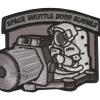
Fixing Odometer, How To Remove Needle?
Started by
Eonblue
, Jun 26 2009 10:43 PM
6 replies to this topic
#1

Posted 26 June 2009 - 10:43 PM
So I'm trying to fix the speedo on my 1980 998 and I'm kind of stuck. Well, the speedo needle rather. Any idea how to get it out?
#2

Posted 26 June 2009 - 10:53 PM
So I'm trying to fix the speedo on my 1980 998 and I'm kind of stuck. Well, the speedo needle rather. Any idea how to get it out?
Pry it up with a kitchen fork.
Honest, best tool for the job!
There is a guide on the galileo gauges site
#3

Posted 26 June 2009 - 10:58 PM
It will never be right now ! Best just source another - there are usually many on ebay. Just make sure you get same 'tpm' as you have now.
#4

Posted 26 June 2009 - 11:47 PM
I think I might have to buy a new one, it gets pretty expensive when you're in Canada though. Is the whole TPM thing important? I might buy the S model one on Minispares, it says it good for minis with a 3.44 final drive ratio.
#5

Posted 27 June 2009 - 12:25 AM
tpm is turns per mile so yes it does need to be the same if you want it to read the same. Speedos are very simple so have a go - the needle is attached to a return spring and steel drum and is just driven by some magnets.
#6

Posted 27 June 2009 - 01:02 AM
The way I remove needles is as mentioned above, with a fork (after placing some thin cardboard over the gauge face to protect it).
Before removing the the needle I carefully turn it "up" until it's pointing at mid-scale. I hold the needle there and turn the gauge around to see the back. There will be an aluminum "drag cup" there. While holding the needle at mid-scale I use a permanent ink marker to make an alignment mark between the aluminum drag cup and some stationary point on the gauge's frame. This allows you to put the needle back in exactly the same spot when you're done with whatever you're working on.
If you didn't do this with your gauge, all is not lost. Just take it to a local gauge repair shop (yes, there probably is one somewhere nearby) and tell them what you did and why you were taking the gauge apart. They will put the needle back on and calibrate it for you. Basically all that means is that they will connect a cable to your gauge, run the cable at an RPM that equals your gauge's TPM number, and carefully push the needle back on at the 60 MPH mark. If you had an accurate variable speed motor you could do this yourself.
Before removing the the needle I carefully turn it "up" until it's pointing at mid-scale. I hold the needle there and turn the gauge around to see the back. There will be an aluminum "drag cup" there. While holding the needle at mid-scale I use a permanent ink marker to make an alignment mark between the aluminum drag cup and some stationary point on the gauge's frame. This allows you to put the needle back in exactly the same spot when you're done with whatever you're working on.
If you didn't do this with your gauge, all is not lost. Just take it to a local gauge repair shop (yes, there probably is one somewhere nearby) and tell them what you did and why you were taking the gauge apart. They will put the needle back on and calibrate it for you. Basically all that means is that they will connect a cable to your gauge, run the cable at an RPM that equals your gauge's TPM number, and carefully push the needle back on at the 60 MPH mark. If you had an accurate variable speed motor you could do this yourself.
#7

Posted 27 June 2009 - 07:58 AM
You should add your location to your profile! Then we would know you are in Canada. Pity you didn't post this a week ago - my wife's just gone out there - she could have dropped a speedo off to you!
Why do you want to take the speedo to bits ? Ahh - I see now it's the odometer - usually the gears strip out, and so not really practical to get a fix. You can of course test it using a reverse running electric drill gun - with a small square drive bit in the chuck. This will at least lket you see where the problem lies.
Why do you want to take the speedo to bits ? Ahh - I see now it's the odometer - usually the gears strip out, and so not really practical to get a fix. You can of course test it using a reverse running electric drill gun - with a small square drive bit in the chuck. This will at least lket you see where the problem lies.
Edited by bmcecosse, 27 June 2009 - 08:48 AM.
1 user(s) are reading this topic
0 members, 1 guests, 0 anonymous users
















